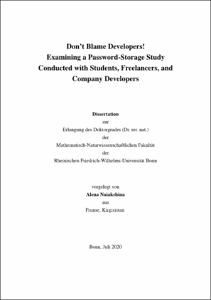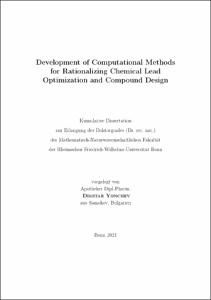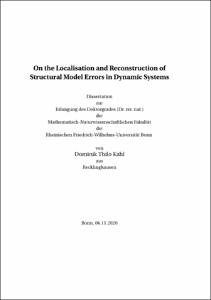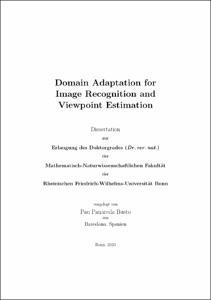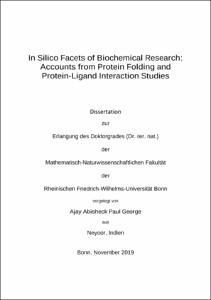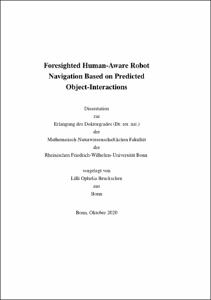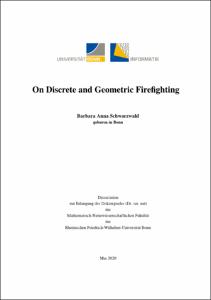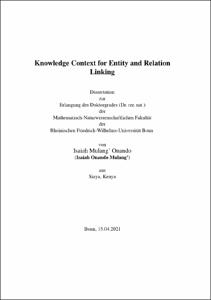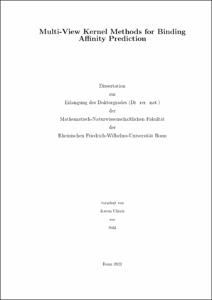Mathematisch-Naturwissenschaftliche Fakultät: Suche
Anzeige der Dokumente 1-10 von 55
Don't Blame Developers! Examining a Password-Storage Study Conducted with Students, Freelancers, and Company Developers
(2020-12-11)
Authentication systems are a major concern for the usable security and privacy community. Twenty years ago, the seminal work “Users Are Not The Enemy” [1] by Adams and Sasse initiated a user-centred approach to research. ...
Development of Computational Methods for Rationalizing Chemical Lead Optimization and Compound Design
(2021-09-22)
Chemical lead optimization (LO) plays an important role in pharmaceutical drug discovery. It represents a highly complex multi-objective process, in which the ultimate goal is to identify a suitable candidate molecule that ...
On the Localisation and Reconstruction of Structural Model Errors in Dynamic Systems
(2021-09-02)
Pursuing a deeper understanding of the behaviour of dynamic systems is a main task of modern sciences, from accurate weather forecasts to precise drug delivery, from electrical engineering to cell biology and the very ......
Frequency Domain Methods in Recurrent Neural Networks for Sequential Data Processing
(2021-07-29)
Machine learning algorithms now make it possible for computers to solve problems, which were thought to be impossible to automize. Neural Speech processing, convolutional neural networks, and other recent advances are ......
Maschinelle Lernalgorithmen erlauben es, Programme zu entwickeln, die Probleme lösen, die noch vor Kurzem für Computer als unlösbar galten. Fortschritte in der neuronalen Sprachverarbeitung, schnelle Faltungsnetze, und ......
Maschinelle Lernalgorithmen erlauben es, Programme zu entwickeln, die Probleme lösen, die noch vor Kurzem für Computer als unlösbar galten. Fortschritte in der neuronalen Sprachverarbeitung, schnelle Faltungsnetze, und ......
Domain Adaptation for Image Recognition and Viewpoint Estimation
(2020-09-08)
Image-based recognition tasks require in their training phase large amounts of data to capture as much visual traits as possible. In many situations, however, the collection of image data implies a tedious effort or, even ...
In Silico Facets of Biochemical Research: Accounts from Protein Folding and Protein-Ligand Interaction Studies
(2020-09-04)
Exponential advancements in computer technology over the last five decades have ubiquitously benefited science and humanity as a whole. Consequent beneficiaries of this surge of computational power include all subfields ......
Foresighted Human-Aware Robot Navigation Based on Predicted Object-Interactions
(2020-11-02)
Since the beginning of the digital revolution robots have become an increasingly important part of modern live. Until recently, this trend was primarily observable in industrial robots, however, with the success of the ...
On Discrete and Geometric Firefighting
(2021-08-19)
Wildfires ravaging forests around the globe cost lives, homes and billions in damages every year, which motivates the study of effective firefighting. In the area of theoretical computer science, several different models ......
Knowledge Context for Entity and Relation Linking
(2021-10-28)
Knowledge graphs (KGs) are structures that provide a compendious representation of real world facts about entities and their relationships. The last decade has seen an increase in the number, size and application of knowledge ...
Multi-View Kernel Methods for Binding Affinity Prediction
(2021-09-27)
In the present thesis, we focus on the potential and limits of multi-view regression techniques in the field of ligand affinity prediction.
Multi-view learning (MVL) denotes machine learning approaches that utilise ...
Multi-view learning (MVL) denotes machine learning approaches that utilise ...


